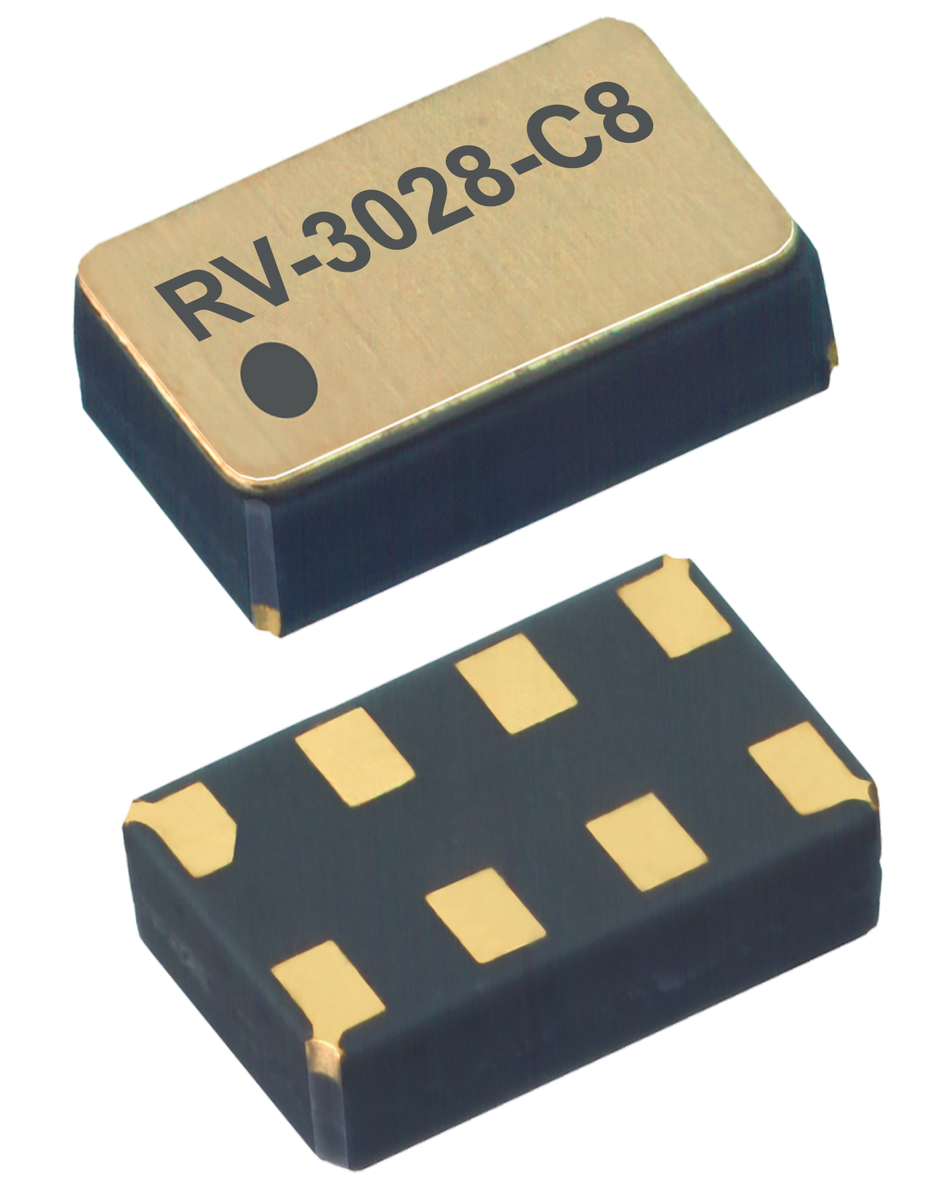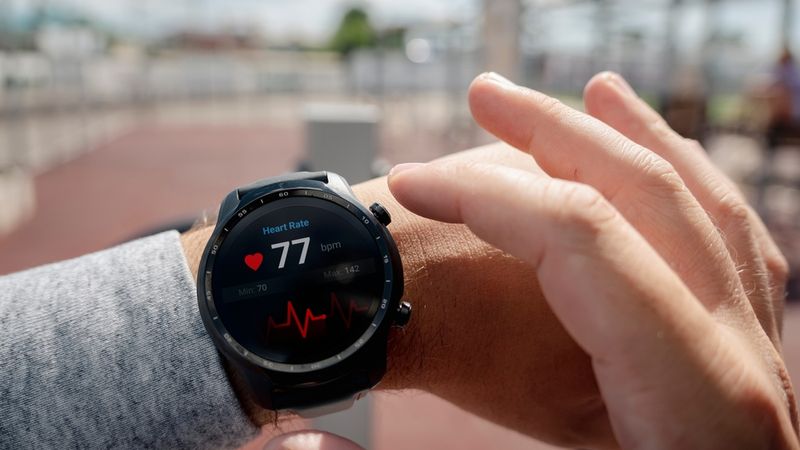Shrinking Time: The Role of RTC Modules in Wearable Tech and Miniaturized Devices
Miniaturization in modern wearables and portable devices is shaped by consumer demands for compact, lightweight, and efficient electronics; Real-Time Clock (RTC) modules are essential for their precise timekeeping, low power consumption, and ease of integration into small designs.
Miniaturization has become a defining factor in modern wearable technologies and portable devices. Consumers demand smaller, lighter, and more power-efficient electronics that bring functionality, reliability, and comfort to their lives. However, integrating high-performance compact components without compromising functionality is quite challenging. In this regard, Real-Time Clock (RTC) modules, such as Micro Crystal’s RV-3028-C8, play a critical role by providing fundamental functionalities like precise timekeeping, low power consumption, and smooth integration into compact designs. This article explores the significance of RTC modules in miniaturized technology, the features of the RV-3028-C8 that support miniaturization, and their applications in various industries.
The Growing Demand for Miniaturized Wearable Technology
The wearable technology market is growing, with approximately 1.2 billion wearable devices shipped in 2024, and projections are that it will reach 1.7 billion by 2030 with a steady 6% compound annual growth rate (CAGR) (Yole Intelligence, 2025). This growth is due to the advanced applications of wearable technology in healthcare, fitness, and consumer electronics.
Wearable technologies, like fitness trackers, smartwatches, and medical monitoring devices, rely on precise and efficient electronic components to function reliably without compromising size or battery life. Consumers prefer these devices to be compact and lightweight, and they integrate smoothly into daily life. For instance, in the medical industry, the adoption of remote patient monitoring solutions is further increasing the need for miniaturized components that maintain high accuracy and low power consumption. Similarly, in fitness and consumer wearables, smartwatches and fitness bands incorporate multiple sensors, such as inertial measurement units (IMUs) and pressure sensors, to track movement, heart rate, and other biometrics. However, a key challenge in all these wearable technologies is balancing size, power efficiency, and performance while ensuring reliability in diverse operating conditions.
To meet these challenges and expectations of consumers, the industry is shifting toward ultra-compact and energy-efficient components that enable smaller, more powerful designs. In this regard, RTC modules are very important to ensure precise timekeeping and synchronization while consuming minimal power. For instance, the Micro Crystal’s RV-3028-C8 RTC module is specifically designed to address these needs with an exceptionally small footprint, ultra-low power consumption, and high accuracy. Let’s discuss its features in detail to understand better how it provides the perfect solution.
Features of the RV-3028-C8 That Support Miniaturization
The RV-3028-C8 is engineered in an ultra-compact design with a very small footprint, measuring just 2.0 × 1.2 × 0.6 mm. This compact size makes it an ideal component for devices with severe space constraints, where every millimeter of board space must be used efficiently. Moreover, the module weighs only 4.4 mg and does not add unnecessary bulk to lightweight consumer electronics. The combination of compactness and minimal weight allows designers to integrate precise timekeeping functionality without compromising the overall size or portability of the device.

The RV-3028-C8 is also optimized for low power consumption, which is a crucial factor for battery-operated wearables and portable gadgets. In the timekeeping mode, it operates at a supply voltage of 3V and consumes just 70 nA. This power efficiency extends the operational life of battery-powered devices and reduces frequent recharging or battery replacement needs.
The module has a wide operating voltage range from 1.1V to 5.5V, which provides compatibility with different power architectures and makes it easier for engineers to integrate the RTC module into various devices without requiring additional power regulation components.
Another critical feature of the RV-3028-C8 is its high accuracy, which is essential for time-sensitive applications. It is factory-calibrated to a precision of ±1 ppm at 25°C and ensures reliable timekeeping with a deviation of no more than ±0.09 seconds per day. High-level accuracy eliminates the need for frequent time adjustment or oscillator recalibration, allowing devices to function optimally over long periods without communication with a time reference such as Network Time Protocol (NTP), thus saving power or user intervention.
Programmable Features
The RV-3028-C8 RTC has many programmable features that enhance its adaptability across various applications. For instance, it includes alarm and timer functions that allow developers to configure precise time-based operations tailored to specific device requirements. These functions enable automated actions, such as activating or deactivating device features at predetermined intervals. For instance, in a fitness tracker, an alarm function can remind users to move after extended inactivity, and a timer function can regulate energy consumption by scheduling periodic low-power states.
Another feature is its automatic leap year calculation for leap years between 2000 and 2099 without requiring manual adjustments. This built-in capability prevents errors in date tracking and ensures long-term reliability without the need for specific code development in applications. This feature is very beneficial for automated logging systems as it eliminates the risk of discrepancies in recorded data due to calendar misalignment.
RV-3028-C8 RTC module also incorporates a backup switchover function for a smooth transition to backup power when the primary power source is lost. Applications that require uninterrupted timekeeping, such as security systems and industrial monitoring devices, benefit from this feature.
The RV-3028-C8 enables precise logging of time-related events through its timestamp function. This feature is particularly valuable in medical and industrial applications where event recording and accurate time correlation are critical. For instance, in portable glucose meters or drug delivery systems, timestamps allow for precise tracking of medication administration times, helping ensure adherence to treatment schedules.
Moreover, this RTC module also presents an external event input, which allows real-time synchronization with external triggers and enhances device responsiveness by aiding it in reacting to specific external events instantly. For instance, in industrial applications, it can facilitate coordination between multiple devices by aligning time-sensitive processes, improving efficiency in automated systems.
Applications of RTC Modules in Miniaturized Devices
Wearables
RTC modules have become an essential component in modern wearable technology. For example, in fitness trackers and smartwatches, precise time-stamping is vital for logging health metrics, tracking activity, and maintaining synchronization with other devices. These wearables continuously monitor parameters such as heart rate, step count, and sleep cycles; hence, they require a reliable timekeeping system to ensure the integrity of recorded data.
Wearable devices are often exposed to movement, impact, and environmental variations. RV-3028-C8 has the ability to withstand shocks up to 5000 g (0.3 ms) and vibrations of 20 g within a 10–2000 Hz range. This resilience and durability are very beneficial in applications such as sports wearables and medical monitoring devices, where dependable timekeeping is necessary despite constant motion and potential external stresses.
Moreover, along with durability and efficiency, the RV-3028-C8 also facilitates integration into existing device architectures. Its standardized I²C interface simplifies communication with microcontrollers, reducing design complexity for engineers, which makes it a practical solution for wearable technology developers looking to enhance functionality while maintaining an efficient development process.
Similarly, smart rings integrate advanced sensors for uninterrupted health monitoring, including blood oxygen levels, heart rate variability, temperature, and other health parameters. As these rings have a small form factor, every component must be optimized for power efficiency and space utilization. RTC modules like RV-3028-C8 align with this exact need and also provide accurate timekeeping with an ultra-low power draw that ensures that critical health factors are logged in real-time without draining the device’s battery.
Auditory Aids
Digital hearing aids require precise timing for various functions beyond just sound processing. While high-frequency clocks manage real-time audio processing, RTC modules like the RV-3028-C8 support time-based features. For instance, RTCs are commonly used for scheduled alerts and reminders, such as notifying users when it's time to take medication or signaling bedtime. The RV-3028-C8's ultra-low power consumption and high accuracy make it ideal for maintaining these time-based functions without impacting battery life.

Healthcare Devices
RTC modules facilitate the accurate timing required for portable medical devices such as glucose meters and automated drug delivery systems. For diabetic patients, continuous glucose monitoring systems depend on precise time-stamping to track fluctuations in blood sugar levels and correlate them with dietary intake, physical activity, and medication schedules. The RV-3028-C8’s high-accuracy clock and time-stamp feature ensures precise tracking of these metrics without the risk of drift. Similarly, automated medication dispensers rely on RTCs to administer drugs at scheduled intervals. The EEPROM-stored configuration prevents data loss during power failures, ensuring uninterrupted treatment schedules. Moreover, programmable alarms allow medical devices to trigger reminders or alerts when medication doses are due. Additionally, the External Event Interrupt feature helps optimize power efficiency by allowing the host microcontroller to remain in sleep mode until triggered by an external event, such as a button press. This capability is particularly useful in battery-powered medical devices, where minimizing energy consumption is crucial for prolonged operation.
Conclusion
RTC modules enable the development of wearable technology and miniaturized devices by providing precise timekeeping functionalities. Selecting the right RTC module can significantly impact the performance, efficiency, and longevity of wearable and miniaturized devices. For engineers and designers seeking the ideal solution, Micro Crystal’s RV-3028-C8 offers a solid choice that enables compact design, power efficiency, and reliability. Visit Micro Crystal’s website to explore RTC solutions and find the perfect fit for your next-generation designs, request a sample or speak to an expert.
References
Micro Crystal. [Online] Available at: https://www.microcrystal.com/en/ (Accessed on January 2, 2025)
RV-3028-C8 Extreme Low Power RTC Module. [Online] Available at: https://www.microcrystal.com/fileadmin/Media/Products/RTC/Datasheet/RV-3028-C8.pdf (Accessed on January 2, 2025)
Yole Intelligence (2025) Sensors and Actuators for Wearables 2025. [Online]. Yole Group. Available at: https://www.yolegroup.com/product/report/sensors-and-actuators-for-wearables-2025/

